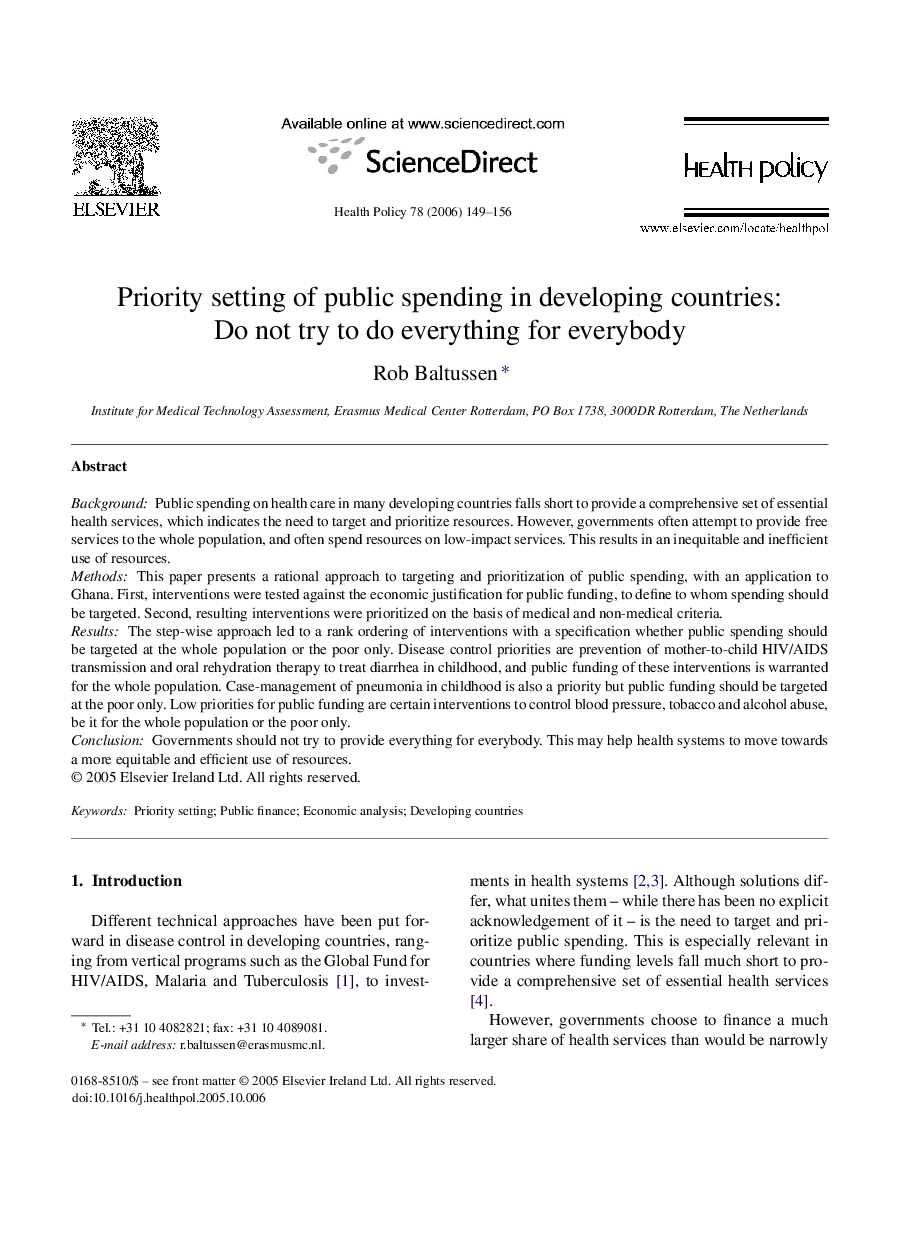| Article ID | Journal | Published Year | Pages | File Type |
|---|---|---|---|---|
| 4199020 | Health Policy | 2006 | 8 Pages |
BackgroundPublic spending on health care in many developing countries falls short to provide a comprehensive set of essential health services, which indicates the need to target and prioritize resources. However, governments often attempt to provide free services to the whole population, and often spend resources on low-impact services. This results in an inequitable and inefficient use of resources.MethodsThis paper presents a rational approach to targeting and prioritization of public spending, with an application to Ghana. First, interventions were tested against the economic justification for public funding, to define to whom spending should be targeted. Second, resulting interventions were prioritized on the basis of medical and non-medical criteria.ResultsThe step-wise approach led to a rank ordering of interventions with a specification whether public spending should be targeted at the whole population or the poor only. Disease control priorities are prevention of mother-to-child HIV/AIDS transmission and oral rehydration therapy to treat diarrhea in childhood, and public funding of these interventions is warranted for the whole population. Case-management of pneumonia in childhood is also a priority but public funding should be targeted at the poor only. Low priorities for public funding are certain interventions to control blood pressure, tobacco and alcohol abuse, be it for the whole population or the poor only.ConclusionGovernments should not try to provide everything for everybody. This may help health systems to move towards a more equitable and efficient use of resources.
